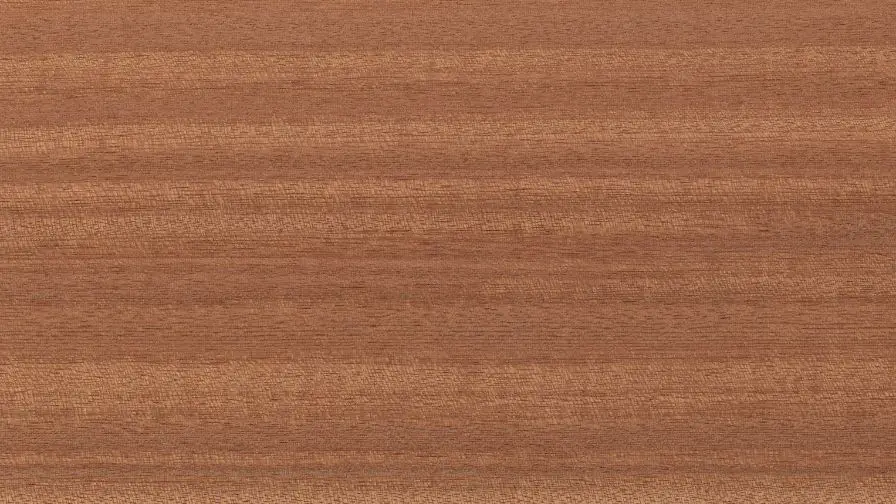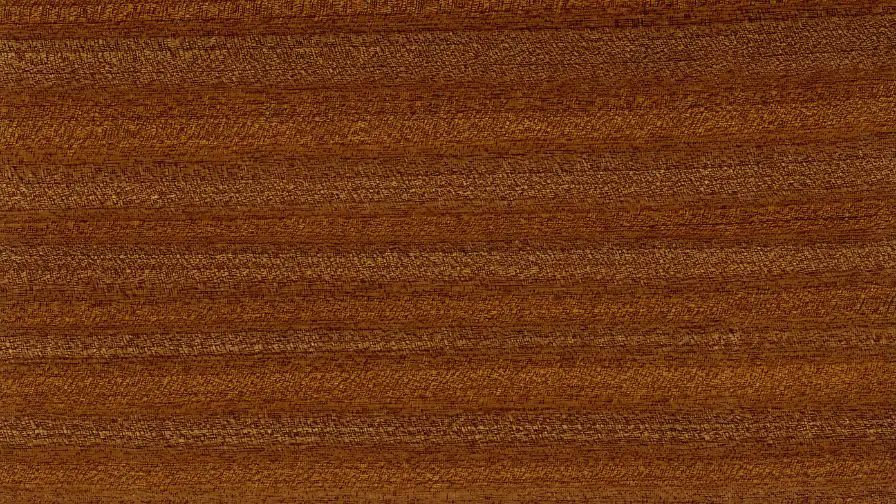
When it comes to woodworking, there are a lot of different types of wood to choose from. Some woods are better for certain projects than others.
In this blog post, we will compare sapele vs walnut wood and see which one is the better option for your project. Walnut is a strong, hardwood that is often used in furniture-making. Sapele is also a hardwood, but it is actually harder than Walnut. Let’s take a closer look at each type of wood and see which one comes out on top!
What Is Sapele Wood?
Sapele wood is a type of hardwood that is native to Africa. It is typically a reddish-brown color, with a straight grain and medium to course texture. Sapele wood is often used in furniture making, as it is a very strong and durable wood.
Sapele wood is an excellent choice for furniture because it is both beautiful and durable. If you are looking for a wood that will last a lifetime, sapele is the way to go. This wood is also a great choice for those who are looking for furniture that has an exotic look. Sapele wood furniture can add a touch of elegance to any room.
Sapele wood is available in different grades, which determines the price. The higher the grade, the more expensive the wood will be. However, even the lower grades of sapele wood are still very strong and durable.

What Is Walnut Wood?
Walnut wood is a type of hardwood that is typically used in the construction of furniture and cabinets. It is also a popular choice for floors and paneling. Walnut wood has a dark brown color with a straight grain pattern.
Walnut wood is available in two main types: black walnut and walnut. Black walnut is the more expensive of the two types.
Walnut wood is available in two different grades. Grade A walnut wood is the highest quality and is typically used in high-end furniture. Grade B walnut wood is of lower quality and is often used in lower-priced furniture or for construction purposes.
Walnut wood is a hardwood that is strong and durable. It is also resistant to warping and twisting. It is easy to work with and takes stain well.

SAPELE VS WALNUT
| CATEGORY | SAPELE WOOD | WALNUT WOOD |
| PRICE | The price of Sapele wood varies depending on the quality of the lumber and can range from $11.99-$13.99/board foot. You can order natural, high character and premium walnut boards. If you order in bulk you can get cheaper pricing. | The price of Walnut wood varies depending on the quality of the lumber and can range from $11.99-$20.99/board foot. You can order natural, high character and premium walnut boards. If you order in bulk you can get cheaper pricing. |
| JANKA HARDNESS | Sapele Janka Hardness score is 1410 | Walnut Janka Hardness score is 1010 |
| DURABILITY | Sapele’s durability makes it a good choice for high-traffic areas and furniture that will see a lot of wear and tear. Walnut is also a durable wood, but it is more prone to scratches and dents than sapele. | Walnut’s durability makes it ideal for furniture and cabinetry. |
| SPECIES | Sapele species is called African mahogany and it’s close to true mahogany in looks and working properties. It’s a bit harder than mahogany and is more stable once in place. It’s a of the genus Entandrophragma of the family Meliaceae. | Walnut species is called Juglans and it belongs to the Juglandaceae family. |
| TREE SIZE | Sapele trees are considerably larger than walnut trees. Sapele can grow to be over 150 feet tall. This means that sapele wood is also much larger in diameter than walnut wood. | Walnut trees are generally smaller, averaging between 20 and 60 feet tall with a spread of 50-75 feet. Walnut tree leaves are larger, darker green, and have a rough texture. Walnut trees have a more rounded canopy. |
| LOCATION | Sapele trees are native to Africa and are grown in tropical regions. Sapele grows best in full sun and well-drained soils. Both Sapele and walnut trees need moist soil to thrive. | Walnut trees are native to the Mediterranean region but are also grown in other parts of the world including North America, Europe, and Asia. Walnut trees prefer a temperate climate with well-drained soil. |
| COLOR | Sapele is typically a deep reddish brown with darker stripes of purple or black running along the grain. Sapele blossoms are small and yellow-green, while the leaves of the sapele tree are shiny and dark green. | Walnut wood is typically a chocolate brown color with darker streaks running through it. Walnut wood may also have a slightly purple hue to it. Walnut, on the other hand, has a more consistent color. It is usually a dark chocolate brown but can also be found in lighter shades. Walnut blossoms are greenish-yellow. |
| GRAIN | Sapele wood grain is more interlocked than that of Walnut. This gives Sapele a varied and interesting grain pattern, while Walnut has a more consistent straight grain. Sapele is also a bit harder to work with because of its interlocking grains. However, both woods take stain and polish well. | Walnut wood grain is straight grained and pores are much larger and more spaced out. Walnut wood grain is more open with a looser feel and a rough texture. |
| END GRAIN | Sapele End Grain has large pores which can give it a very rough appearance. This is because the pores are filled with oil and other materials that can cause the wood to swell and shrink as the temperature changes. Walnut, on the other hand, has much smaller pores. This gives it a smoother appearance and makes it more resistant to changes in temperature and humidity. | Walnut End Grain is smooth, with small, uniform pores arranged in a spiral pattern. Walnut on the other hand is a softer more open grained wood that will show knife marks more readily. Walnut also has a limited range of colors and grain patterns. |
| ROT RESISTANCE | Sapele’s rot resistance is legendary. The wood is so resistant to rot, that it’s used in boatbuilding. Walnut, on the other hand, is not as resistant to rot. However, both woods are excellent choices for furniture. | Walnut’s rot resistance is due to the chemical properties of juglone and its low density. Walnut is a relatively soft wood, and its low density makes it more difficult for decay-causing fungi to penetrate the wood. |
| SUSTAINABILITY | Sapele trees mature faster than Walnut trees and can be ready for harvest in as little as 20 years. This makes them a more sustainable option when compared to Walnut trees, which can take up to 60 years to mature. Also local governments have scaled back production of this lumber and helped start new tree farms to help regrow the population. | Walnut trees can be harvested after reaching maturity between 40-60 years old. It is not as sustainable because it is a less common resource and takes longer to grow. |
| USES | Sapele wood can be used for a number of applications due to its strength and resistance to wear. It is commonly used in the construction of furniture, flooring, interior trim, and musical instruments. | Walnut wood can be used for furniture, cabinetry, gunstocks, veneers, interior paneling, cutting boards, marquetry inlays, checkboards, flooring, millwork, desks, dining tables and butcher blocks. |
| RELATED SPECIES | Sapele related species are found in tropical Africa. Sapele (Entandrophragma cylindricum) is a member of the mahogany family and is sometimes referred to as African mahogany. | Walnut related species are found mostly in the southern hemisphere but some grow in the northern hemisphere as well. There are about 30 related species of walnut including black walnut, butternut, and heartnut. walnuts are evergreen. |
SAPELE VS WALNUT: PROS & CONS
| SAPELE | WALNUT | |
| PROS | The pros of Sapele wood are it’s strength and durability, it’s beautiful grain pattern and it’s ease to work with. | The pros of Walnut wood are that it is very strong and durable. Walnut is also a popular choice for furniture because it has a beautiful grain pattern. Walnut can be stained or painted to match any decor. |
| CONS | The cons of Sapele wood are that it can be difficult to find and can also be expensive. | The cons of Walnut are that it is susceptible to scratches and dents. Walnut is also a bit more expensive than some other types of wood. |
Sapele is best for:
-Furniture
-Interior paneling
-Doors
-Stair treads
-Exterior applications such as siding, soffits, and porch flooring
Sapele is an excellent wood for furniture making. The wood has a beautiful grain pattern that can be enhanced with a variety of finishes. Sapele is also a popular choice for interior paneling and doors. The wood is very strong and durable, making it an ideal choice for stair treads. Sapele can also be used for exterior applications such as siding, soffits, and porch flooring. The wood is very versatile and can be used in a variety of applications.

Walnut Wood Is Best For:
-Making high-quality furniture
-Creating beautiful floors
-Constructing cabinets and other storage solutions
If you’re looking for a wood that will give your home a luxurious look and feel, then walnut is the way to go. This type of wood is often used in high-end furniture and flooring, as it has a rich, dark color that really makes a statement.
It’s also perfect for constructing cabinets and other storage solutions, as it is both strong and stylish. So if you’re looking to add a touch of luxury to your home, then walnut wood is the way to go.

What Wood Is Similar To Sapele?
Mahogany is similar to Sapele in many ways including its reddish brown color, straight grain, and fine texture. However, Mahogany is typically more expensive and difficult to find in large boards.
Sapele is also similar to African mahogany, which is another type of wood that’s often used for furniture and cabinetry. African mahogany has a similar color and grain pattern, but it’s usually a bit lighter in color than Sapele.
Both woods are strong and durable, making them ideal for use in furniture and other projects that will see a lot of wear and tear.
Is Sapele A Durable Wood?
Yes, Sapele is a durable wood it actually has a Janka Hardness score of 1410. That is pretty high on the hardness scale. The wood is also very resistant to rot and decay making it a great choice for both indoor and outdoor use.
Subscribe to Tom Sands on YouTube



